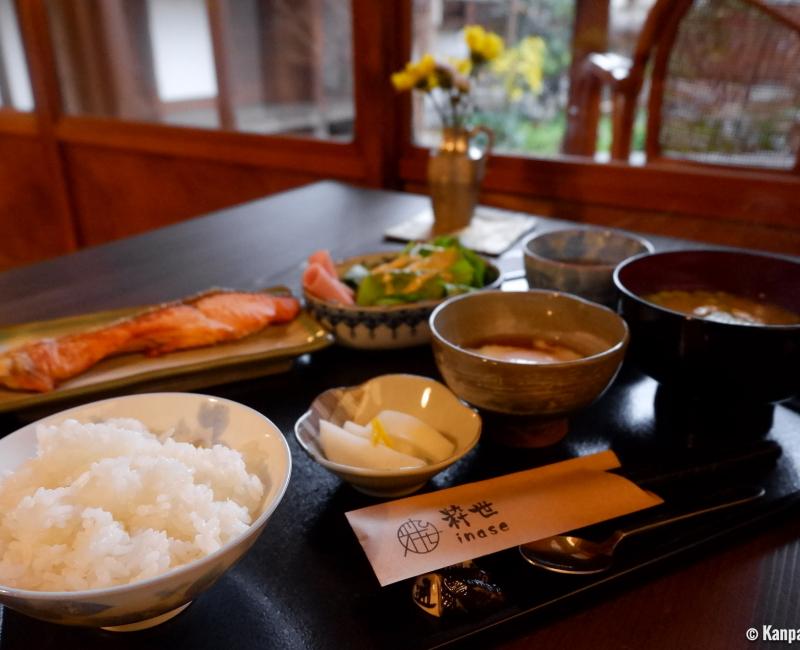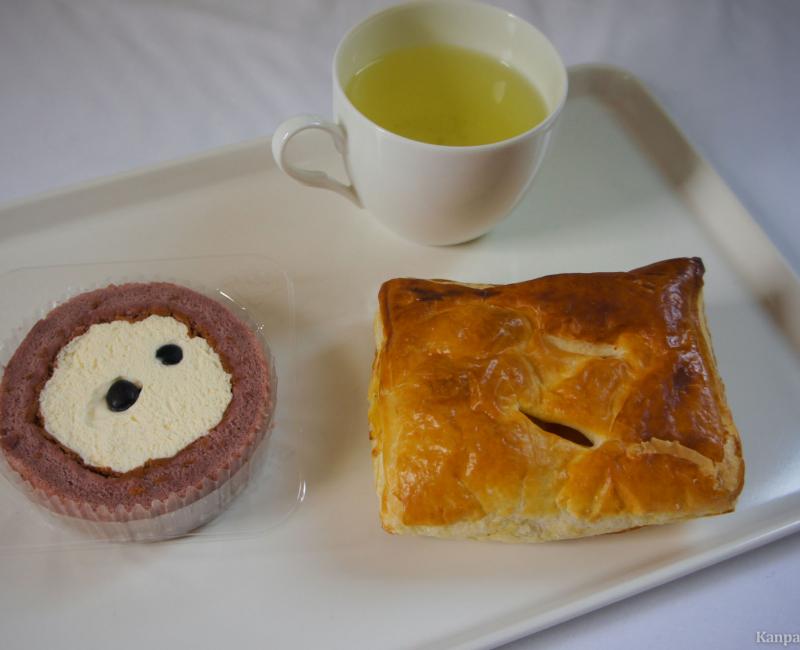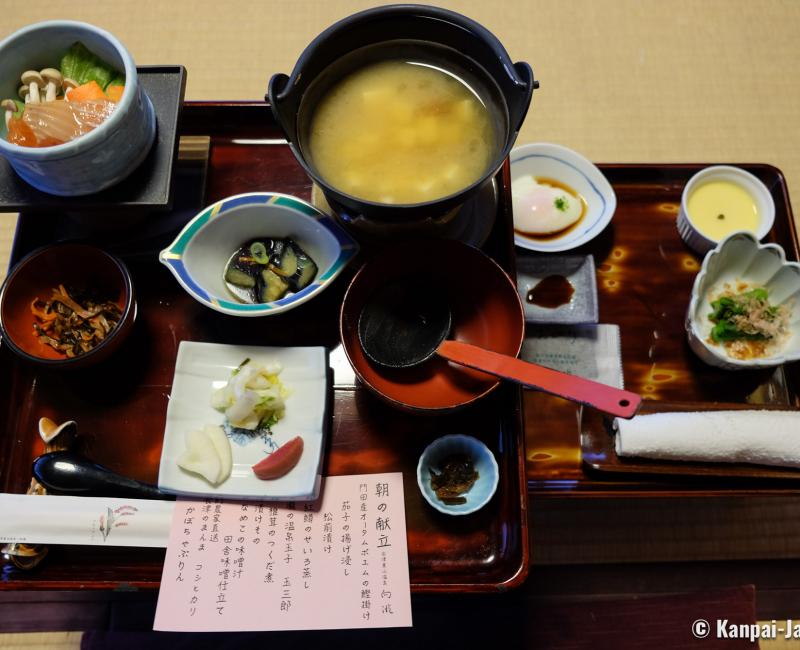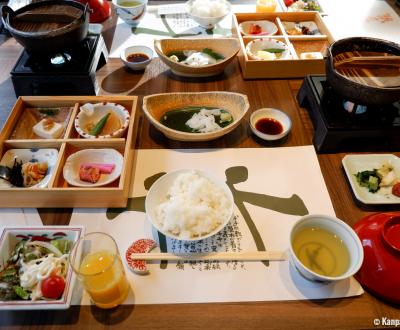The Japanese Breakfast
A Well-balanced and Savory Tradition
The traditional Japanese breakfast consists of a spread of small savory dishes, in the same manner as lunch or dinner. The same ingredients – rice, grilled fish, natto and miso soup – are served along with green tea. Wholesome and balanced, it is renowned for being one of the healthiest breakfasts in the world. In cities, young Japanese also enjoy a more westernized and sugared version with coffee and sweet pastries.
Like its British counterpart, the typical Japanese breakfast is rather hearty and salty. The day begins early in the Land of the Rising Sun, so the Japanese developed the habit of eating enough in the morning to have their energy fueled at least until lunch time. Nowadays’ dietetics and healthy food trends consider this tradition a good practice and the Japanese breakfast illustrates the well-known saying: "Eat breakfast like a king, lunch like a prince, and dinner like a pauper".
The first meal of the day in Japan also has the advantage of being balanced and wholesome. Ingredients that are too fat and therefore too difficult to digest are avoided, while slow-release carbohydrates and vitamins are preferred. The meal is nonetheless delicious and appetizing, but requires a certain amount of preparation and above all the capacity and desire to eat rice and fish shortly after waking up!

A savory and balanced traditional meal
The authentic recipe includes several essential nutrients, such as:
- Carbohydrates,
- Slow-release carbohydrates,
- Proteins,
- Vitamins, and,
- Water.
The Japanese breakfast is made following the rules of the aesthetical traditional kaiseki cuisine and comprises several dishes served in various table wares. Each portion is relatively small to favor variety in the meal and small quantities. We have listed the staple ingredients of breakfast in Japan.
A bowl of white rice
Japanese rice is rich in carbohydrates and in starch, and therefore in slow-release carbohydrates. Like bread in Western countries, rice is a base ingredient of Japanese cuisine and is eaten at each meal. Rice is served unflavored at breakfast, but it can be seasoned with a raw egg and sprinkled with furikake (ふりかけ) when eaten in a tamago kake gohan (卵かけ御飯), or with natto (納豆), fermented soybeans full of vegetal proteins and very good for the health, but with a quite unique texture and taste.
Fish, egg or meat
Various dishes are used to add proteins in the Japanese breakfast, most of the time egg omelet and grilled fish (salmon and mackerel are the favorites), and sometimes raw fish served in sashimi. Meat is also served occasionally, such as karaage fried chicken or small pork sausages, however their fat content makes them less dietetic.
Vegetable condiments
The Japanese condiments named tsukemono (漬物) are rich in vitamins and, like rice, are served at all meals. The vegetables can be pickled, marinated or fermented, and the most frequently used are daikon white radish, cucumber, lotus root, ume plum, cabbage or ginger. A small green salad can be served in addition to the pickles and vegetables.
Miso soup
Light, rich in nutrients, not very salted, the miso soup quenches and warms in winter. It is often topped with diced tofu or wakame seaweed.
A cup of green tea
Green tea is traditionally served at breakfast. Well-known for its many benefits for health, starting from its antioxidant properties, it is ideal to re-hydrate after a night of sleep. People also tend to replace it by coffee or a glass of orange juice.
The okayu porridge on difficult starts of the day
If suffering from digestive disturbance, we recommend trying okayu. This rice porridge is usually prepared for introducing new food in babies' diet but is also very useful to soothe an upset bowel. The rice is cooked with more water than usual and is seasoned with, among other things, salmon, tofu, yuzu citrus and grated cheese for taste.
This association of healthy and filling dishes contributes to the popularity of the traditional breakfast, especially among nutritionists who describe it as the secret behind the good health and longevity of the Japanese people. However, the younger generations, lacking time or interest for the Japanese taste, sometimes prefer a more westernized morning meal.

A sugared version for the busiest
In large cities, students and workers have a long commute each morning and little time for breakfast. They usually eat outside and can’t rely on yesterday’s leftovers to pack a small savory meal on the morning.
On their way, they drop by one of the Western-style bakeries or coffee chains (Starbucks, Tully's, Doutor, etc.) and buy a take away breakfast consisting of a coffee with sweet pastries. The young Japanese love the breakfast’s sugared version with toasts, cakes, donuts, and cereals that is quicker to prepare and to eat, but also contains more fat and quick-release sugars, and is therefore less healthy.
Couples approaching their thirties however tend to come back to the savory traditional breakfast. They return to the kaiseki-style as they realize the benefits of a daily healthiest lifestyle. One of the two partners in the couple would therefore prepare breakfast, wake up early and cook for the household, all the more if they have children.

Where to take a breakfast in Japan?
Japanese people mostly take their breakfast at home. There is not really any restaurant brand specialized in breakfast as it is not in the habits to eat it outside. Thus, tourists in Japan should plan their traditional breakfast in advance.
Most of travelers wait to spend a night at a ryokan inn to discover kaiseki cuisine for dinner and in the morning. Traditional inns are indeed often the best choice to enjoy a refined Japanese breakfast, composed of a large selection of ingredients served in beautiful vessels. However, this quality of service comes at a cost and a night in this type of high-end lodging can amount to several hundred dollars per person.
Without going so far as booking a ryokan, and taking care of avoiding the non-representative buffet at the western-style hotel 🏨, famiresu-type family restaurants chains such as Gasuto or RoyalHost are a good alternative to try a typical Japanese breakfast. They open as soon as 6~7a.m. and have a varied menu with sweet as much salty dishes, at affordable prices: Between ¥600 (~US$3.81) and ¥2,000 (~US$12.70) on average for a full course. The very early birds can also visit a fish market and have a raw fish snack during there.
If renting an apartment or a house, it is possible to cook and eat at home. All the necessary ingredients to prepare a good breakfast can be purchased from the konbini and other supermarkets (supa). It is quite easy to find onigiri 🍙, small plates of maki or sushi 🍣, miso soup in sachet, as well as soft bread to toast, various Viennese pastries, dairies such as yogurt, and fruits.
When traveling in the archipelago, we recommend taking the time to try an authentic Japanese breakfast, a delicious way to immerse in the Japanese culture and to discover new diets to accommodate to one’s taste at home.


